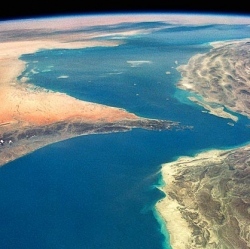
In the vastness of space, dormant seeds and spores resistant to the harsh conditions hitch a ride onto particles and travel the universe. Some eventually are drawn in by the gravity of a planet and end up on the surface. If the conditions are right, they can rise from their slumber and start evolving.
The idea is hard to believe and for over a century, there was little evidence to prove the postulate. Yet by the turn of the 21st century, some of the clues began to fall into place. First, spores were indeed able to survive in space as long as they were protected from cosmic rays. When tested in the matrix of a meteorite, the survival increased to levels capable of initiating life on another planet. Over the years, other microbes were added to list, suggesting part of the theory was indeed plausible.
Of course, survivability in space does not make a terrestrial microbe. Depending on the timing of entry, the Earth would not be the inviting environment it is today. Several factors would be extreme, including temperature, atmosphere, and nutrient supply. But amid the myriad of species on Earth, several are capable of surviving the harshest of conditions. Aptly named extremophiles, these species could indeed survive the conditions of pre-historic times and thrive.
Even with the ability to survive in space and on land, there is still a gap in the ability to turn fantasy into plausible reality. The microbe has to survive the stress of atmospheric entry. The heat could potentially kill the hardiest of spores and leave nothing more than a lifeless organic husk, or ash, on the soil. Proper shielding could offer hope but the evidence was scarce at best. One particular study in 2010 managed to send a species of algae through the entire entry process but it did not survive. In 2014, another study revealed DNA could survive the journey but this could not be extrapolated to life itself.
Last week, the theory received a boost thanks to a study by a team of Russian scientists. They found fully formed bacteria shielded by a meteorite could survive the entry process and initiate growth. The results may help to spark a new wave of tests to determine which species could actually represent the origin of life on Earth.
